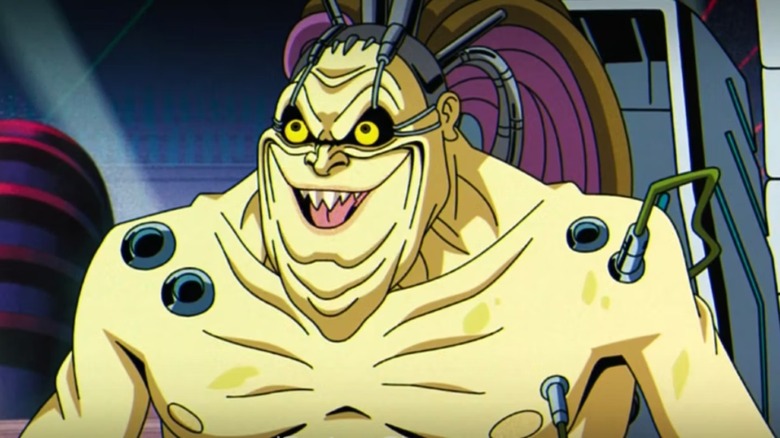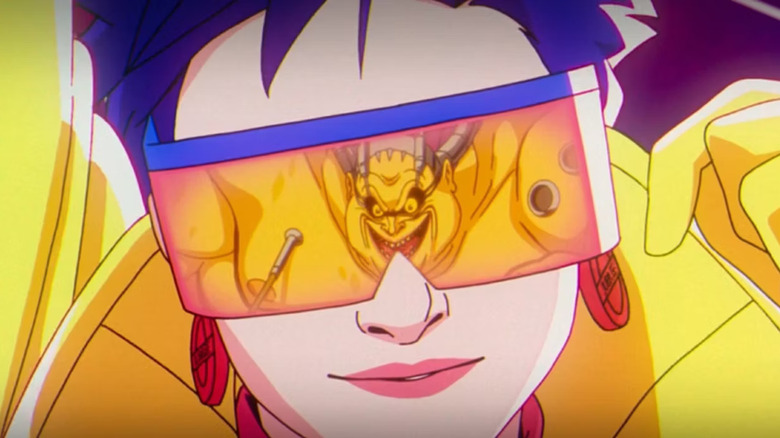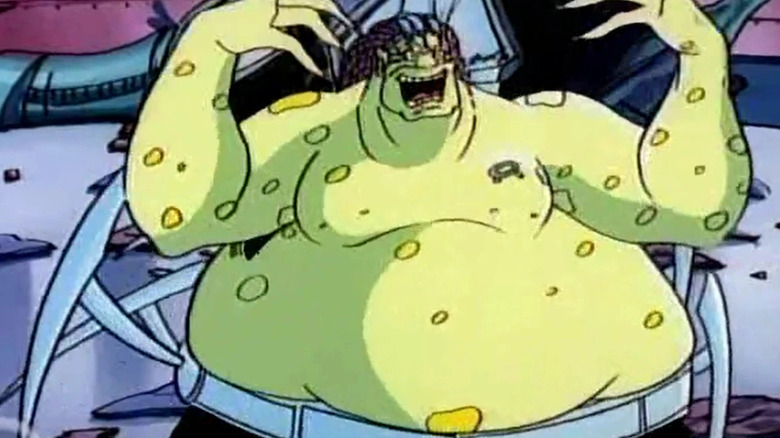Who Is Mojo? The Interdimensional Villain From X-Men '97 Episode 4 Explained
The latest episode of "X-Men '97," called "Motendo/Lifedeath, Part 1," features the return of Mojo, a longtime X-Men villain who made his debut in "Longshot" #3, published in November of 1985. Mojo was a horrible, mutilated cybernetic monster with robotic spidery legs and a series of mechanical tubes sprouting from his body. He ruled a dimension called the Mojoverse, and oversaw one of the realm's most popular TV shows, "Mojovision," a gladiatorial show wherein superpowered beings from across multiple dimensions would be forced to fight to the death. Mojo lived for ratings and only cared about watching his numbers increase. He was modeled after the shallow TV executives and schmoozing moneymen who oversee most creative efforts in Hollywood.
Mojo made a memorable appearance in two episodes of "X-Men: The Animated Series" wherein he was enthusiastically played by Canadian voice actor Peter Wildman. In "Mojovision" (February 5, 1994), he snarled and cackled as he forced the X-Men to fight monsters for his amusement. "I'm coming up with numbers mathematicians haven't even heard of!," he would guffaw. In the episode "Longshot" (October 5, 1996), he travels to Earth in pursuit of the titular hero, a mutant with acrobatic powers.
In "Motendo/Lifedeath, Part 1," Mojo is transformed from a snarling TV executive into a video game mogul, finding that the universe's medium of choice has changed. Mojo (now played by David Errigo) kidnaps Jubliee (Holly Chou) and forces her to fight in a living video game that strongly resembles the 1992 "X-Men" arcade cabinet. Mojo, just like Disney, knows how profitable it is to milk Gen-X nostalgia.
Provided here is a brief history of Mojo.
Mojo 1985
It's no coincidence that a character like Mojo should appear in the pages of X-Men comics in the year 1985. The '80s were a time of media deregulation thanks to the vomitous up-with-money policies of actor turned politician Ronald Reagan. Prior to the 1980s, it was illegal to market directly to children, with many considering that milking children for money was crass. When Reagan took office, those rules were removed or weakened, allowing companies to market as much junk as they wanted directly to kids. This is why kiddie products and toyetic entertainment from that decade boomed the way it did.
There's an old saying: if you blindly blame Reagan for something bad about society, you'll be right more often than you'll be wrong.
Naturally, there was a lot of punk rock pushback to Reagan's brazen business-forward practices, and characters like Mojo began popping up throughout media. Mojo was the ultimate TV exec, the man more concerned with ratings than human life. He was a monstrous yuppie. Mojo was created by Ann Nocenti and Art Adams. Nocenti admitted that Mojo was inspired by the authors she studied while getting her Master's at Columbia, particularly Marshall McLuhan, Noam Chomsky, and Walter Lippman. If the media is monstrous, then why not give it a face? Mojo was the media monster, feeding off his viewers.
Mojo was literally spineless, having come from a species that couldn't evolve as quickly as homo sapiens. Another species provided exoskeletons and spidery platforms for Mojo's species to walk around with. They also demanded slaves do all their labor. The implication is that Mojo, while ambitious, is unbearably lazy. The slaves were genetically engineered to resemble society's nightmares. It so happens that their nightmares are TV signals from Earth.
Mojo throughout media
Because Mojo exists as a critique of pop media, he has handily been shunted about various X-Men comics, TV shows, and video games. Because he oversees a world based on gladiatorial combat, Mojo's presence allows comic book writers to go hogwild, inventing whatever surreal fight scenarios they want for their heroic mutants. It was Mojo, for instance, who was responsible for creating the X-Babies, which were cute, babyish clones of the classic X-Men.
Apart from appearing in two episodes of "X-Men: The Animated Series," Mojo appeared in the 2009 show "Wolverine and the X-Men" (where he was played by the venerable Charlie Adler), as well as on the 2013 series "Avengers Assemble." Because of the surreal look of the character, Mojo hasn't yet appeared in live-action or via CGI. The villain also hasn't been featured in a comic book since 2006, so sadly, he was never present to provide bleak commentary on the ascendency and rulership of the Marvel Cinematic Universe.
However, Mojo was the central antagonist in the 1996 SEGA Game Gear game "X-Men: Mojo World," and was a boss on the "X-Men" game for the SEGA Genesis.
Despite having risen from a very particular political landscape, Mojo remains weirdly timeless. As long as media remains commercially exploitative, Mojo will always be there to serve as its poisonous face. In the Marvel Comics, Mojo is surrounded by a death field and he kills everything he touches on Earth. This is a fine comment on the entropic nature of mass corporate media. The X-Men are currently owned by Disney, and "X-Men '97" is a brazen nostalgia-based marketing grab. Mojo arrived just in time to remind us of that.


